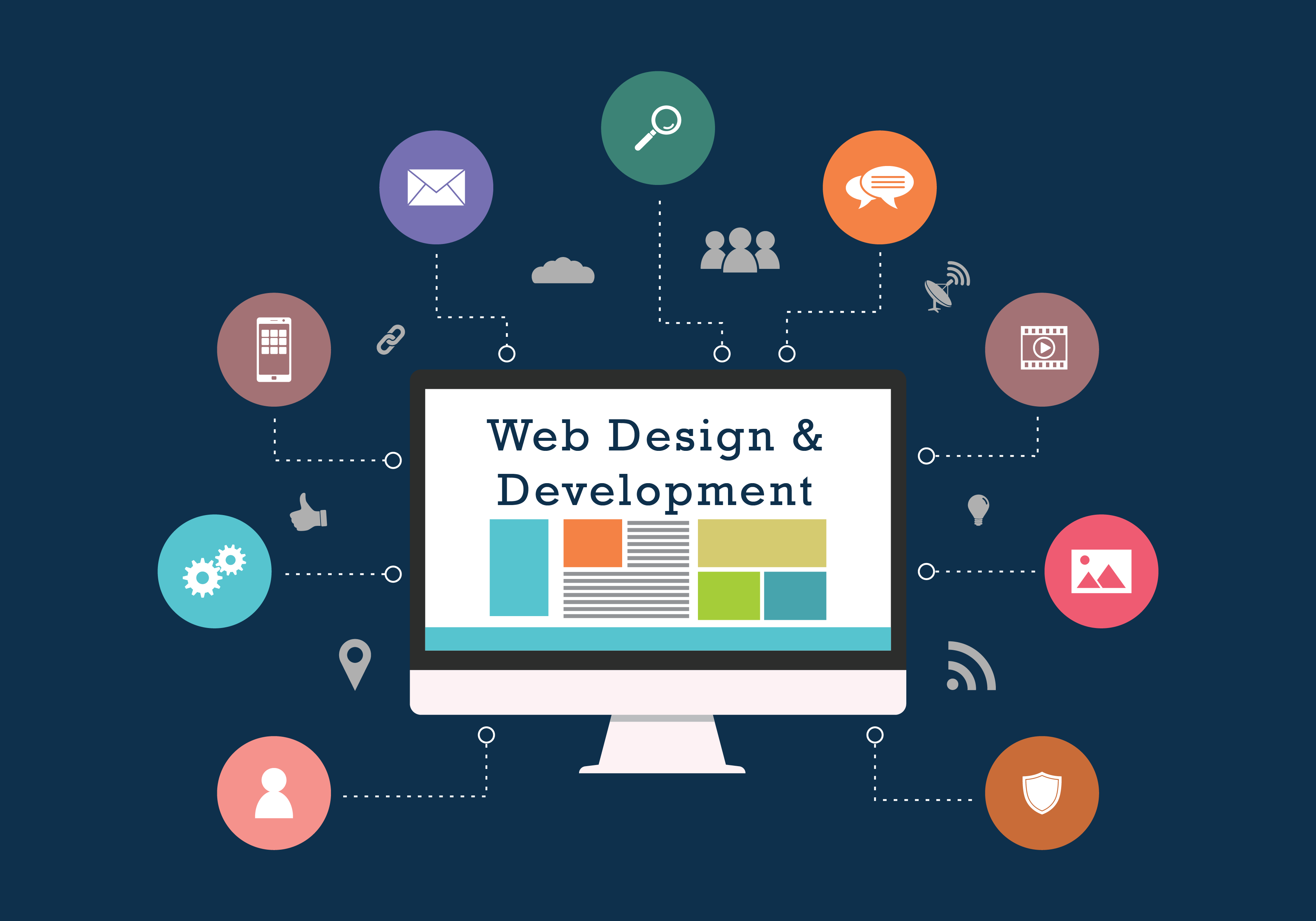Professional Web Design in Penang for Small Companies and Startups
Professional Web Design in Penang for Small Companies and Startups
Blog Article
Important Principles of User-Centric Website Design for Ideal Engagement
In the realm of website design, user-centric principles act as the foundation for fostering involvement and contentment. By prioritizing customer needs, enhancing use, and making certain availability, designers can create experiences that resonate with diverse audiences. In addition, the visual elements of a website play an important role in recording focus and promoting communication. Yet, the journey in the direction of optimal interaction does not end here; continuous customer responses is vital for fine-tuning these concepts. Understanding how these elements interconnect can considerably impact the performance of an internet style strategy. What are the vital elements that absolutely make a difference?
Recognizing User Demands
Comprehending user requirements is essential to producing effective web designs that reverberate with target audiences. An extensive comprehension of user needs makes it possible for designers to craft experiences that are not only practical but also engaging. This procedure begins with detailed research methodologies, including customer interviews, surveys, and analytics, which help to recognize the specific choices, habits, and pain factors of the target audience.
Moreover, empathy plays a critical duty in comprehending customer needs. By entering the users' shoes, designers can much better expect their assumptions and produce tailored options that address their problems - Web design in Penang. Building user personas, which encapsulate the qualities and inspirations of regular users, can even more lead layout decisions and guarantee placement with individual top priorities
Additionally, contextual questions allows developers to observe customers in real-world atmospheres, supplying insights right into exactly how they interact with existing systems. This qualitative information can notify design iterations that improve user fulfillment. Eventually, a user-centered method, based in a deep understanding of individual requirements, not just boosts functionality but additionally promotes loyalty and depend on, causing increased involvement and improved total user experience.
Prioritizing Use

Furthermore, the relevance of feedback can not be overemphasized. Customers ought to obtain instant, clear feedbacks to their activities, such as form submissions or button clicks, helping them recognize the outcomes of their communications. This feedback constructs count on and urges ongoing interaction.
Additionally, it is essential to conduct usability testing during the design procedure. Observing real customers as they interact with the site can disclose discomfort points and locations for improvement. Iterative design based upon individual comments not just improves functionality but likewise Bonuses aligns the website extra carefully with individual assumptions. Ultimately, focusing on use cultivates a user-centric method that drives engagement and improves the overall efficiency of the internet experience.
Making Certain Availability

To achieve access, developers must comply with developed guidelines such as the Web Material Accessibility Guidelines (WCAG) These guidelines highlight the value of providing message choices for non-text content, making certain enough comparison between message and background shades, and enabling key-board navigation for all interactive aspects (Web design in Penang). Additionally, clear and concise language needs to be made use of to aid understanding
Integrating accessibility features not just advantages people with click here now disabilities however likewise enhances overall user experience. Screen visitors can aid customers in navigating material efficiently, while inscriptions and transcripts make multimedia easily accessible to those with hearing disabilities. Moreover, an obtainable site can improve seo (SEO), as internet search engine prefer well-structured and straightforward sites.
Ultimately, prioritizing accessibility fosters inclusivity, allowing all individuals to completely engage with electronic web content and making sure that nobody is left behind in the electronic landscape.
Visual and Visual Design
A well-designed site not only fulfills availability criteria but also astounds customers through its visual and aesthetic aspects. The aesthetic layout of a website plays a crucial role in creating an interesting user experience. Efficient use of shade, typography, and images can stimulate feelings, share brand name identification, and guide individuals with the web content effortlessly.
Color design ought to be very carefully picked to mirror the brand name's individuality while preserving readability and visual convenience. Typography needs to be understandable and sympathetically incorporated right into the overall style, making certain that it complements as opposed to distracts from the content - Web design in Penang. Images ought to be premium and relevant, offering to boost the message instead of bewilder it
Whitespace is another important component of visual design. It offers breathing space, allowing individuals to concentrate on important components without really feeling littered. In addition, consistency in aesthetic layout elements, such as buttons and symbols, cultivates knowledge and improves navigation.
Eventually, a well-executed visual and aesthetic style not just attracts users yet additionally motivates expedition and interaction, leading to a more satisfying on-line experience. This structure is crucial for promoting much deeper involvement and developing a long-term connection with the audience.
Continuous Customer Responses
Individual responses acts as an important pillar in the evolution of website design, guaranteeing that the site proceeds to satisfy the demands and expectations check this site out of its audience. By actively getting viewpoints and insights from individuals, designers can uncover beneficial info that drives improvements and fosters interaction. This repetitive procedure not just boosts individual contentment yet also develops a sense of area and trust fund.
To properly gather continual customer responses, numerous approaches can be utilized, including surveys, usability testing, and analytics tools. Studies can provide quantitative information on customer choices, while functionality testing uses qualitative understandings right into how customers communicate with the website. In addition, analytics devices can track behavioral patterns, disclosing areas of rubbing that might not be instantly noticeable.
It is vital to examine and prioritize responses, dealing with high-impact issues that impact user experience. Interacting updates and modifications made in response to user input strengthens the worth of their contributions, encouraging ongoing involvement. Ultimately, a dedication to continuous individual feedback not just fine-tunes website design however additionally grows a user-centric technique that can considerably boost involvement and commitment in time.
Conclusion
In final thought, the crucial concepts of user-centric web layout encompass a comprehensive understanding of customer needs, a solid focus on use, and the assimilation of accessibility functions. Aesthetic and aesthetic layout play an essential role in improving individual experience. Continual individual responses better educates design improvements, making sure that web sites continue to be engaging and efficient. By sticking to these concepts, developers can develop electronic environments that not just fulfill individual expectations however likewise foster complete satisfaction and long-lasting engagement.
Report this page